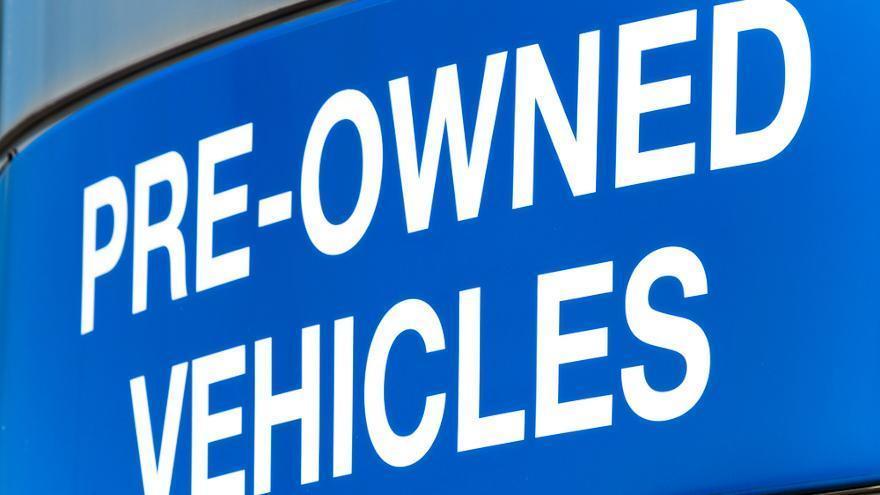Retail used-car prices jump $708 in one month

More evidence of a shift in demand from new vehicles to used: average listing prices for used vehicles jumped more than $700 from June to July, a period in which they normally would see a depreciation-fueled decline, according to Edmunds.
Specifically, used vehicles had an average listing price of $21,558 last month, which was up $708 from June, Edmunds said, calling the price gain an “unprecedented historical shift” for pre-owned.
This price spike is driven by a big uptick in demand, as many new-car shoppers opt for used instead, says Edmunds senior manager of insights Ivan Drury.
“We’re seeing evidence of more typical new-car shoppers gravitating toward the used-car market than usual during the pandemic due to a combination of factors: Consumers are being more financially responsible, interest rates and CPO offers have been extremely favorable, and inventory has been severely limited on the new side,” Drury said in a news release. “Shoppers might be a bit surprised to find that prices are ratcheting up on used vehicles because of significantly increased demand.”
He later added: “It’s a seller’s market right now. Although used vehicles continue to offer significant discounts compared to new, used-car shoppers will find themselves in the unusual position where they might not have as much negotiation power because demand is so high and dealers will be less inclined to be flexible.
“If you’re in the market for a used car, what you see in terms of pricing is likely what you’re going to get, so do your research and be prepared to act quickly if you have your heart set on a vehicle,” Drury said.
By segment, the price gains are across the board. Comparing 2017 model-year vehicle prices in July to those from June, the largest increase among mainstream segment (in terms of dollar amount) was for the large truck segment, whose prices climbed $2,301 over the month.
Midsize trucks were next (up $1,812), followed by sports cars ($1,369).
On the luxury side, the luxury midsize car had the biggest price spike ($1,151), followed by luxury compact cars (up $993) and luxury subcompact SUVs (up $931).
Looking at some additional recent data, J.D. Power said in a report Wednesday that its used retail price index was at 105.1 for the week ending Sunday, which was up from 104.6 the week ending July 26, 103.8 the week ending July 19 and 103.2 the week ending July 12.
“Used retail prices continued to rise, increasing 0.4ppts week-over-week in the week ending August 2. Prices are now 5.1% higher than the index baseline level from March 1,” J.D. Power said in its report.
On the wholesale side, there was a 26% increase in used-vehicle prices from April to June, following a 17.6% decline in April as the pandemic gripped the market, according to Moody’s Analytics’ quarterly Wholesale Used-Vehicle Price Report, authored by associate director and senior economist Michael Brisson.
“To put that in perspective, used-vehicle prices rose only 20% from January 2011 to the end of 2019,” Brisson said in the report, referring to the 26% spike between April and June.
“Prices soared from April to June because not enough vehicles were available. Supply of new vehicles was impacted as safety concerns from the pandemic caused all auto manufacturers in the U.S. to halt operations by the end of March,” he said. “This led to vehicle production shutting down despite demand for vehicles remaining solid.”
Looking forward, Moody’s was projecting prices in the third quarter will still be high thanks to supply and demand dynamics, but there likely won’t be a repeat of June’s bounce.
“The perfect storm of decreased supply and demand that arose in June is not sustainable. Additionally, the shoots of recovery may be stomped out as a majority of states, including the economic powerhouses of California, Texas and Florida, have been forced to put reopening plans on hold because of virus reintensification,” Brisson wrote.
“More important to prices, though, will be consumer sentiment. If COVID-19 outbreaks and subsequent shutdowns continue, consumer confidence will wane, driving down personal consumption. Without consumers buying things, businesses will not hire and the labor market will not be able to recover in full for a long time. Unfortunately, this fear and pullback cycle is the most likely scenario for the U.S. until a vaccine or treatment becomes viable.”
Moody’s is expecting an easing in prices thanks to more supply becoming available, be it from de-fleeted rental volume, restart of repossessions or off-lease cars finally coming out of extended leases.
“Sellers looking to take advantage of the used-vehicle price bubble will bring more vehicles to auction, driving prices down. Additionally, there will be pressure on the demand side as the unemployment rate stays persistently high. The baseline forecast is for an economy that is treading water rather than sinking through the rest of the year,” Brisson said.
“The current most likely path is that the double-dip recession will be staved off by another round of federal stimulus measures, and the virus spread will not lead to widespread economic shutdowns. Under this baseline scenario, a steady decrease in wholesale used-vehicle prices is expected to last until 2021.”
Getting into some of the specific data, average sale price at auction in the second quarter was $11,346, according to the report, citing NADA and Moody’s Analytics data.
That beat year-ago figures by 1.86% and was up from $10,834 in the first quarter.
Wholesale auction sales volume for the quarter was 1.16 million units, down 43.18% year-over-year, according to Moody's. In Q1, it was at 1.77 million.

 View The Latest Edition
View The Latest Edition

